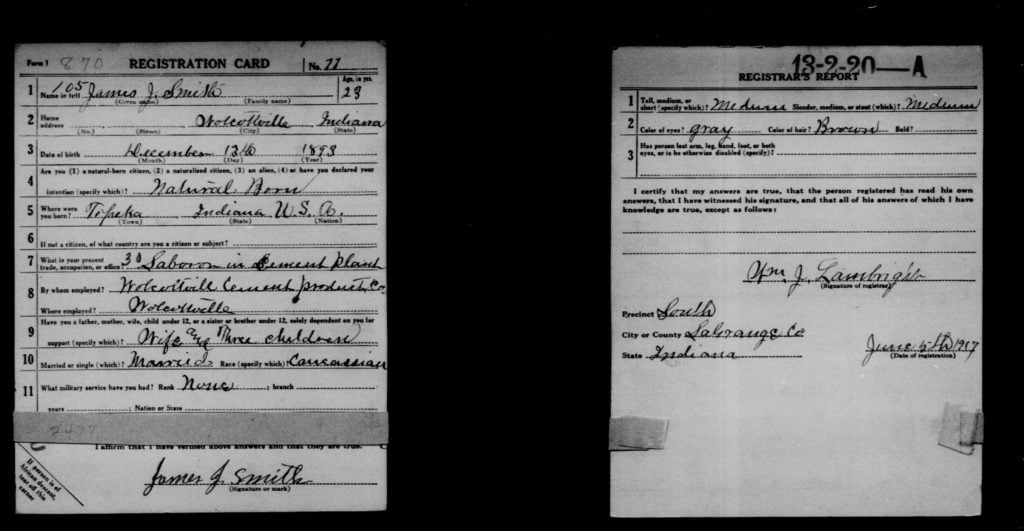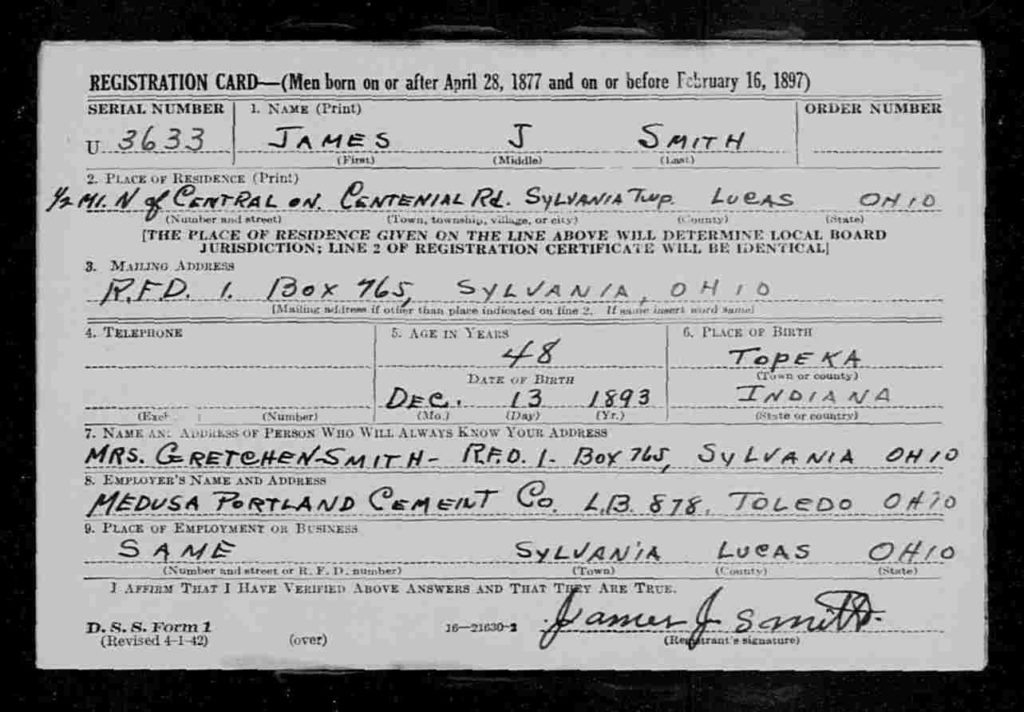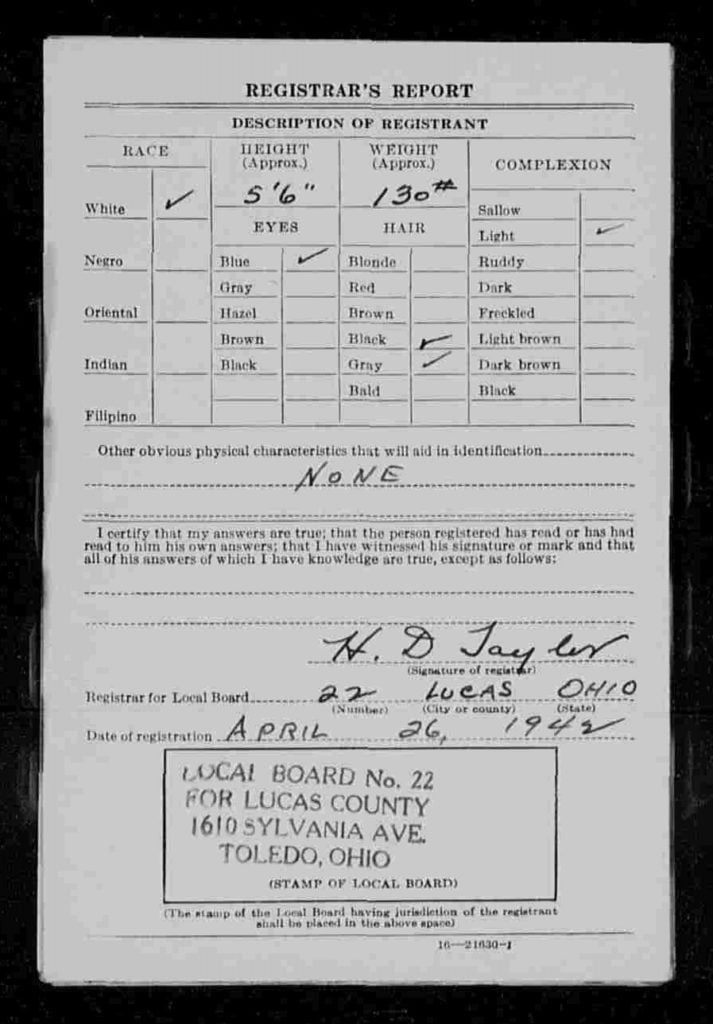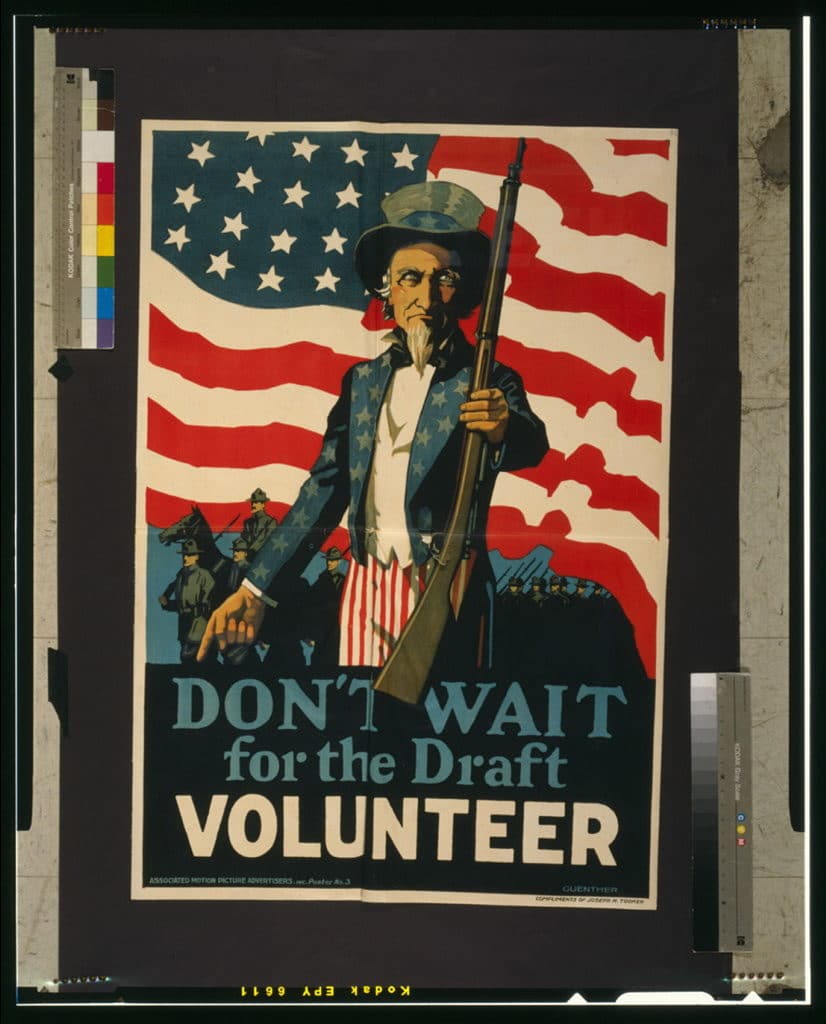There are few things more exciting in family history research than stepping beyond names and dates for a moment to record some personal details about an ancestor. Whether it’s an employer’s name, an unknown detail in a will or a fascinating description of military service, personal details help us better understand the story of our ancestors’ lives.
One of the most interesting finds for many researchers is a personal description of an individual — a chance to know what our ancestor looked like. Since most of us will never be lucky enough to collect photographs of all of our ancestors (although we’ve listed some great places to look for them here), a personal description is the next best thing. And, luckily, there is one set of documents available for free online that provides just this.
Both the WWI and WWII draft cards recorded details about a man’s personal appearance, in addition to other important information — such as their birth date and location, employer and closest relation. And even more interesting, men born in the last two decades of the 19th century were most likely recorded in both drafts — assuming that they were living in the US during both draft periods.
WWI Draft Cards
There were three WWI draft registrations that occurred in 1917 and 1918 – the first two registered men between the ages of 21 and 31 and the third, at the end of 1918, recorded men ages 18-45. This means that men born as early as 1873 and as late as 1900 were supposed to be included and should have a record on file.
Here’s a WWI draft card — notice how eye and hair color are recorded in addition to general height and build. Each registration was a bit different, but all recorded generally the same information.

WWII Draft Cards
The WWII draft registered an even larger selection of men in four groups– including those ages 45-64 as part of what is often called the “Old Man’s Draft” in 1942. This draft of men had a different purpose than to record those of peak fighting age — as is explained on FamilySearch:
This registration was different from the others conducted by the government. It’s sole purpose was to gather information regarding manpower resources in the United States. The registration included men born between 27 April 1877 and 16 February 1890 – ages 45 to 64 – and listed their industrial capacity and skills that could be used for military support during World War II.
Right now, this is the only WWII registration freely available online — although Fold3 is currently working on adding the earlier drafts. Some are available on their site now at a cost but they will most likely become more widely available in the future.
Because the 1942 WWII draft covered men born in 1877-1897, many of them were also included in one of the WWI draft registrations.
Here is the same man as is shown in the WWI draft card above — but in the WWII draft. Notice how his exact height and weight as well as eye, hair and skin color are all recorded on the second image — as well as any identifying marks (he didn’t have any, and this information seems to be fairly uncommon in both drafts).


To find the WWI draft registration cards online for free simply visit this page on FamilySearch. More information about this collection can be found here.
For the WWII “Old Man’s Draft” visit this page on FamilySearch. When searching this collection make sure you view both images by clicking the next arrow on the image. For more details about this collection visit this page.
Tip: It is very helpful to know your ancestor’s birth date and their location during the registration year if he had a common name. Since nearly every able man of appropriate age in the US appears in these databases it can be hard to choose between them if you do not have this information.
Good luck!
Image: WWI Draft Poster. 1917. Library of Congress

How does one know by looking at a draft card if that individual was drafted or simply enlist?
What did cancel on a ww2registration card mean
Many of the American WW1 records I’ve seen on Ancestry are terrible quality. Not sure whether it has something to do with how they were scanned. But many are barely readable. The example provided with this article are by far the best I’ve seen yet.
As mentioned above, FamilySearch provides many of the same resources as Ancestry and plus resources Ancestry doesn’t provide, at no cost. However, they updated (read screwed up) their search function and at times you have to jump through multiple hoops to get the correct records to come up. And when you search for a new name, you have to re-create the hoops search (i.e., census, marriages, military, etc.). And if you’re not familiar with this, you may leave the site thinking they have nothing to offer.
Check with your local library to see if they provide access to any genealogy sites free of charge. My library system has a Local Genealogy and Research website, with 24 different research services. Several are free even without their system (Family Search, Find-a-grave), others like Ancestry can only be accessed at the library, using your library card to sign on. If you do a search for your own records, you can access your Ancestry tree but can’t update any records, but you can download to a flash drive or email the records.
The draft cards mentioned above are available free of charge on FamilySearch. Links are provided for both collections in the article. Enjoy!
WE CANT AFFORD TO PAY FOR INFO ANYMORE. WE HAVE EXHAUSTED OUR FUNDS FOR SUCH.
THANKS THOUGH!